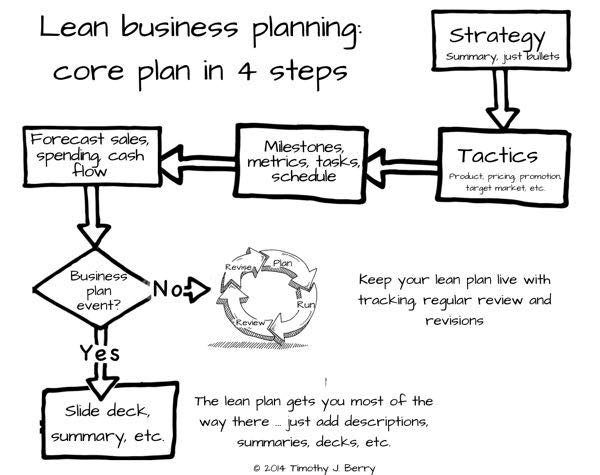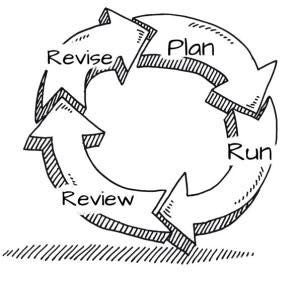
What if you own a business, you’re not a startup, and you don’t have to generate a traditional business plan to show to a bank or an investor: would you still want a business plan? Yes, emphatically, yes you do…
- … but it’s not a traditional business plan. It’s a lean plan.
- … and you don’t really want a plan. You want planning. You want planning for your business like you want navigation for your journey, with destination, route, and real-time dashboard information to make changes easily, and optimize.
The lean business plan:
So the lean business plan is simple, just bullet points and lists and tables. It’s easy to do. It doesn’t include the summaries and descriptions of a traditional business plan because it’s for you, the business owner to use. It’s not for outsiders. It’s not an academic exercise. It doesn’t have to prove your market. It doesn’t need a carefully composed executive summary. You don’t sweat the editing or formatting because this lean plan isn’t a document; it’s just a plan.
Of course it includes essential business numbers. We all know, as business owners, the value of forecasting sales, budgeting expenses, and planning our cash flow.
And if you happen to be a LivePlan user, it gets even better: use the pitch page for strategy and tactics, the schedule for milestones, the built-in financial projections, and link back to your accounting for automatic plan vs. actual. Then you have lean business planning to optimize your business.
Recurring Lean Business Plan Cycle
Notice please the plan-run-review-revise cycle in the diagram, also shown here on the right. That’s where you see how planning works for real businesses, as dashboard and navigation. You keep a lean plan fresh with regular review and revision. Steering is course correction, and so in planning. You lay out strategy, tactics, milestones, and projections, not to show them to outsiders, but to define expectations so you can track results and make changes as required when results are different from expectations (and they will be … you might check out business plans are always wrong, but vital). You have your strategy and tactics in bullets, your key performance indicators, milestones you’re working towards, and financial projections; and then you have tracking and regular review, and course corrections.
Planning done right as dashboard and GPS
We lived through the real use of business planning at Palo Alto Software in 2008 when the great recession hit and our sales tumbled. We had a plan and we had plan vs. actual results, so as sales declined, we were easily able to find the connections between sales and discretionary marketing expenses, so we could temporarily cut expenses without cutting any employees. That was much better because we don’t like to lose employees who know us and like us and are doing well.
The change in that case didn’t make our business plan null and void. It made it more valuable.













